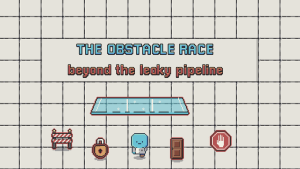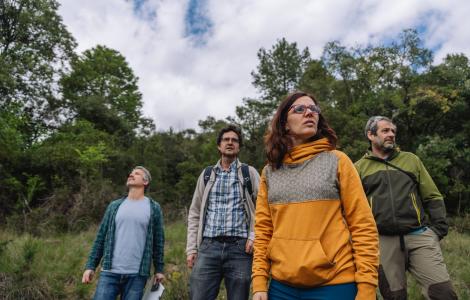In reality, it is not an inevitable, passive trickle, but a hostile obstacle course, with cultural and structural barriers holding back people from historically excluded groups in particular.
CREAF creates a video game to raise awareness of discrimination in scientific careers
To commemorate 11F, the International Day of Women and Girls in Science, CREAF has created a video game that shows that gender, social class, origin or other factors add obstacles that slow down scientific careers or deprive you of reaching certain levels. Thus, the game allows you to experience this situation through a character who suffers one or more discriminations at the same time, which is known as intersectionality. This project aims to raise awareness of structural discrimination and intersectionality through graphic representation and play. It is a CREAF initiative, promoted by Teresa Rosas, head of Academic Talent and EDI (Equity, Diversity and Inclusion) at CREAF, and developed with the CREAF Communication Department in collaboration with Lasse Loepfe, lecturer at the UPC's Centre for Image and Multimedia Technology (CITM).
The game, an endless runner inspired by examples such as Subway Surfers, allows players to step into the shoes of characters with diverse, randomly generated identities. Thus, players can experience how gender, origin, social class or functional diversity increase the difficulty of their scientific career, which becomes an obstacle course, and how their conjunction leads to scenarios of almost unbearable difficulty. This mechanic is a metaphor for what Kimberlé Crenshaw defined as intersectionality in 1989, a key concept for understanding how different forms of oppression create and reinforce each other.
From the ‘leaking pipe’ to the obstacle course
From the ‘leaking pipe’ to the obstacle course
The video game challenges the traditional idea of the ‘leaky pipeline’, a term often used to describe how women and other minority groups diminish as one moves up the scientific career ladder: ‘In reality, it is not an inevitable, passive trickle, but a hostile obstacle course, with cultural and structural barriers holding back people from historically excluded groups in particular,’ explains Teresa Rosas, the driving force behind the project.
How does the game work?
How does the game work?
The player will start with an identity that combines factors such as gender (male, female, non-binary), social class (high or low), race (white or racialised) and functional diversity (with or without). These factors will affect the density of obstacles encountered along the way and the user experience (e.g. speed of movement). During the race, the character can earn medals that in turn can be used to destroy obstacles.
With this initiative, CREAF wants to encourage reflection and make visible the realities of many people in science. ‘Recognising the different facets of our identity and the oppressions that can arise allows us to question our privileges and, at the same time, to value difference’, concludes Rosas.
‘The video game will serve as a basis for future research on which mechanics and audiovisual elements best communicate the impact of privilege and barriers on career progression in science,’ says Lasse Loepfe, professor at the UPC's Centre for Image and Multimedia Technology (CITM).
Play the game, explore how identities influence your journey and share your experience! Help us build a fairer and more equitable academic world for all.









